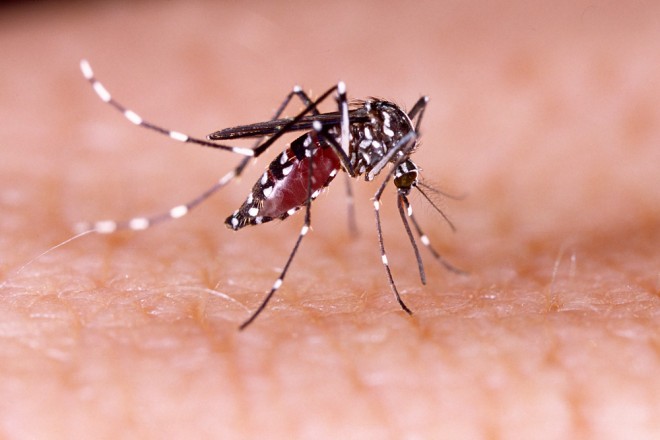The coronavirus has completely changed our reality this year! But this is far from the only virus that could (hypothetically) wipe out humanity. There are 8 really dangerous "horsemen of the apocalypse" that we never, but seriously, never want to meet!
If humanity encountered a virus similar to that of 1918 (we are talking about Spanish flu), between 20 and 100 million people would die. But the flu virus is not the only one that threatens humanity - according to the World Health Organization, at the beginning of the 80s of the last century, 39 new diseases, which were mostly transmitted from animals to humans. Many new viruses that are or still threaten humanity are actually 'old', as animals have been carrying them for centuries. The best example of this is HIV virus, which is the successor of the SIV virus (Cameroon chimpanzee virus). Experts believe that the transformation of 'peaceful SIV' (non-dangerous to chimpanzees) into HIV occurred 70 years ago, when deforestation and road construction began in Africa.
Let's take a look at the 8 most dangerous viruses that experts call the 'horsemen of the apocalypse'.
Ebola, Marburg and Lassa hemorrhagic fevers
Hemorrhagic fevers Ebola, Marburg and Lassa are viral diseases that manifest as febrile illnesses and are often accompanied by bleeding and damage to various organ systems.
Lassa virus
The first case of human infection was recorded by a nurse in the Nigerian city of Lassa in 1969. The virus is transmitted by rodents in West Africa, especially house rats. It causes vomiting, diarrhea and viral hemorrhagic fever. Around 300,000 people are infected with the virus every year, and around 5,000 people die.
Marburg virus
The virus got its name from the German city of Marburg, where it appeared in 1967 among laboratory employees when they were doing research with infected monkeys from Uganda. At that time, 7 people died from Marburg fever. This virus also causes viral hemorrhagic fever, severe bleeding, organ failure and, in most cases, death. The mortality rate is 90%.
Ebola
The Ebola outbreak first appeared simultaneously in 1976 in Sudan and the Democratic Republic of the Congo. The worst Ebola epidemic was in West Africa, killing 11,300 people between 2013 and 2016. Due to globalization, some cases of Ebola have also been recorded in the West. The most likely 'reservoir' of the virus is herbivorous bats, and humans are infected by the blood and other body fluids of infected chimpanzees, gorillas, bats, monkeys, forest antelopes and other species. Symptoms include high fever, chills, muscle pain, headache, vomiting and diarrhea, and eventually severe bleeding, coma and death.

Crimean-Congo hemorrhagic fever
The disease was first recognized in the Crimea in 1944, and the virus was later identified as the same agent that caused the disease in the Congo in 1969. In the last ten years, the disease has appeared in South-Eastern Europe, Greece, Albania, Bulgaria, Serbia and Kosovo. Wild and domestic animals, such as sheep and cattle, are natural reservoirs of the virus, which is considered one of the 'profiteers' of climate change and global warming. The infection is transmitted by an infected tick or by direct contact with the blood of an infected animal, most often at slaughter. The virus usually causes a mild fever, but some strains of the virus cause viral hemorrhagic fever and organ failure.
Nipah virus and Hendra henipavirus
Steven Soderbergh found inspiration for the film Contagion (2011) in the Nipah virus, which appeared in the Malaysian city of the same name in 1998. The virus, which is carried by bats, went on to kill thousands of pigs, and within weeks it 'jumped' to humans, killing hundreds. Nipah is classified as the fourth, highest category of biological threat, which means that it is studied in special laboratories with the greatest possible security measures. A close relative of the Nipah virus is Hendra, a virus that jumped from horses to humans in Australia in 1994 and killed several people. This virus is also transmitted by bats in South Asia.

Dengue hemorrhagic fever
Dengue fever is also known as bone-breaking fever. It is a tropical disease caused by the dengue virus, which is transmitted by tropical and tiger mosquitoes. Symptoms include high fever, headache, muscle and joint pain, and a measles-like rash. In severe cases, profuse bleeding may occur, resulting in death. Between 50 and 100 million people fall ill with the common cold every year.
The Zika virus
The Zika virus originates from Africa and is named after the Zika tropical forest near Lake Victoria in Uganda, where it was first isolated from monkeys in 1947. The virus later spread along equatorial Africa and later to Asia, Polynesia and a few years ago to the Americas. The virus is transmitted by the tropical shield mosquito (Aedes aegypti). Humans are infected by the bite of a female mosquito. Most infected people have no symptoms, but the Zika virus is very dangerous for pregnant women, as the infection can cause a child to be born with microcephaly. In medicine, microcephaly or small-headedness means abnormally small head size, which is most often caused by disturbed brain development and is often associated with mental retardation.







